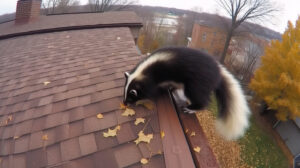While the infamous Pepé Le Pew has been around for nearly 80 years, real skunks don’t have that much staying power. A cat-sized mammal, skunks don’t live as long as felines but have similar lifespans to weasels and stoats. Although skunks were once believed to be part of the weasel family with these animals, they are now classified in their own distinct family (Mephitidae). So, if the skunk lifespan isn’t the same as a cat’s, and they aren’t weasels, how long do skunks live (and what else makes them unique)?
The Life of a Skunk
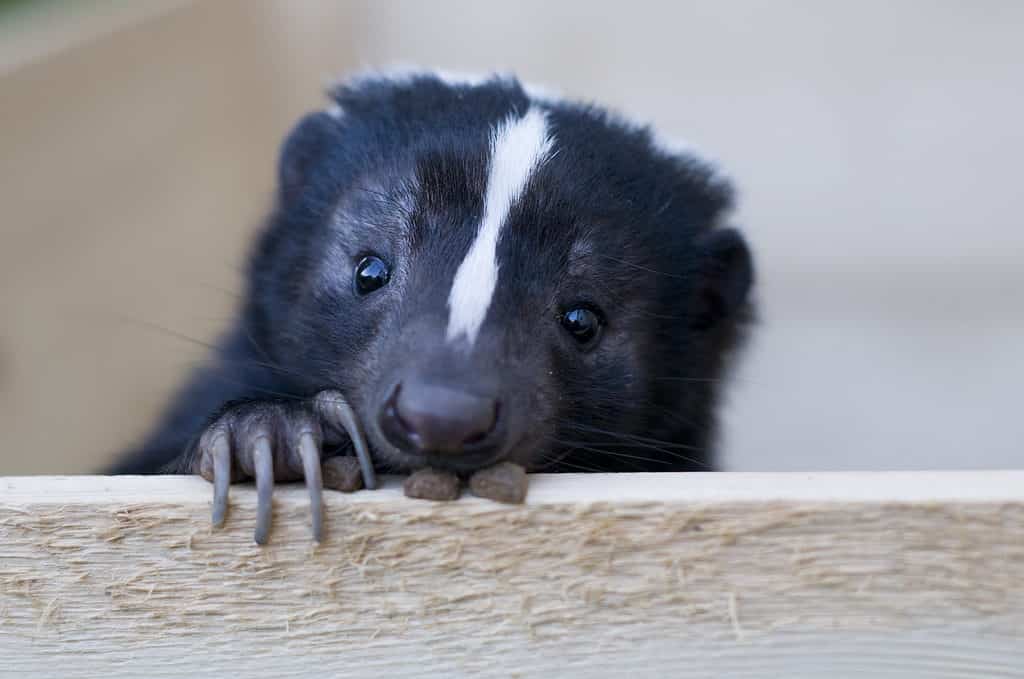
A skunk’s distinctive black-and-white coloring warns predators away.
©Yasmins world/Shutterstock.com
Skunks are sexually mature at 9-12 months, which means they can get pregnant in the first breeding season following their birth. Skunks mate in late winter, between late January and mid-March. If a skunk breeds too early, it can undergo delayed implantation. In delayed implantation, the embryo stops developing until an optimal development time. This means that a pregnancy can be delayed so that babies are born later in the season when the weather is more temperate and food is more abundant. Pregnancies with delayed implantation will last longer than the average 63-day gestation period.
Skunks can have litters from 2-10 babies, known as kittens. Kittens are born between March and June, with most births occurring in April and May. Skunks are born without hair (though their stripes are visible on their skin at birth). Their trademark black-and-white fur comes in at 2 weeks, and their eyes open at 3-4 weeks old. Babies wean at 6-8 weeks, at which point they will leave the den and start foraging for food with their mother.
Baby skunks stay with their mom until they are 2-3 months of age. Female kittens stay with their mothers longer than males. While males usually venture off on their own at around 7-10 weeks old, females may stay with their mothers for months. Skunks typically only have one litter per year.
The Average Skunk Lifespan
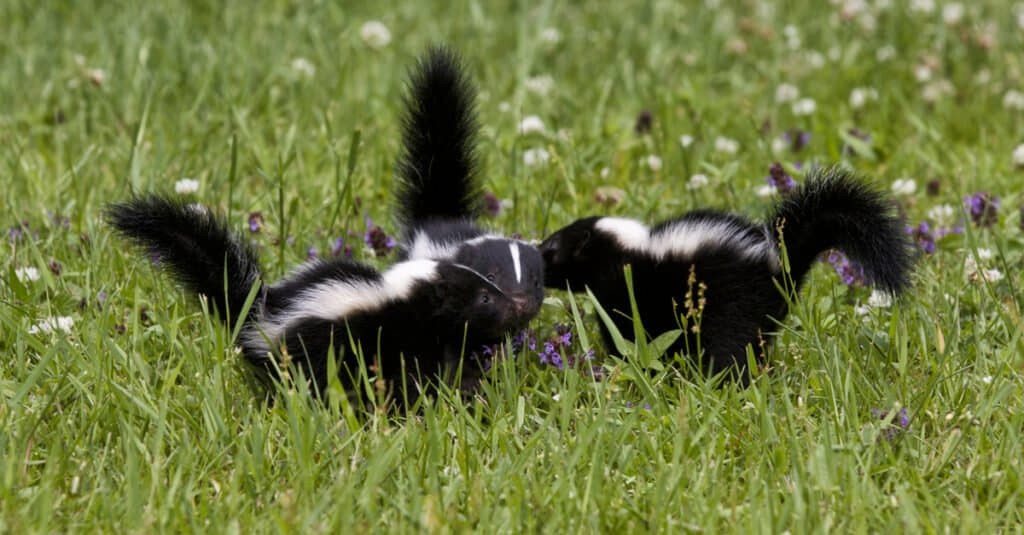
A group of skunks is called a surfeit.
©Debbie Steinhausser/Shutterstock.com
Skunks don’t live for very long. Even though they have few natural predators, they are often killed by cars or dogs. As such, the average skunk lifespan of 3-6 years, though they can live up to 10 years in captivity.
When Can Skunks Spray?

There are five types of skunks in the United States, but the striped skunk is the most common.
©Lynn_Bystrom/iStock via Getty Images
Skunks are born stinky! A skunk’s musk gland is developed at birth, though most cannot release musk until around 7 days old. While they may emit odors at this age, a skunk’s anal glands are not fully developed until they are around 3 months old. By 4 months, they are able to spray with accuracy. This coincides with the time they leave their mother and are no longer under her protection. They are then able to spray throughout the rest of their lifespan.
Increasing Skunk Lifespan Through Spray
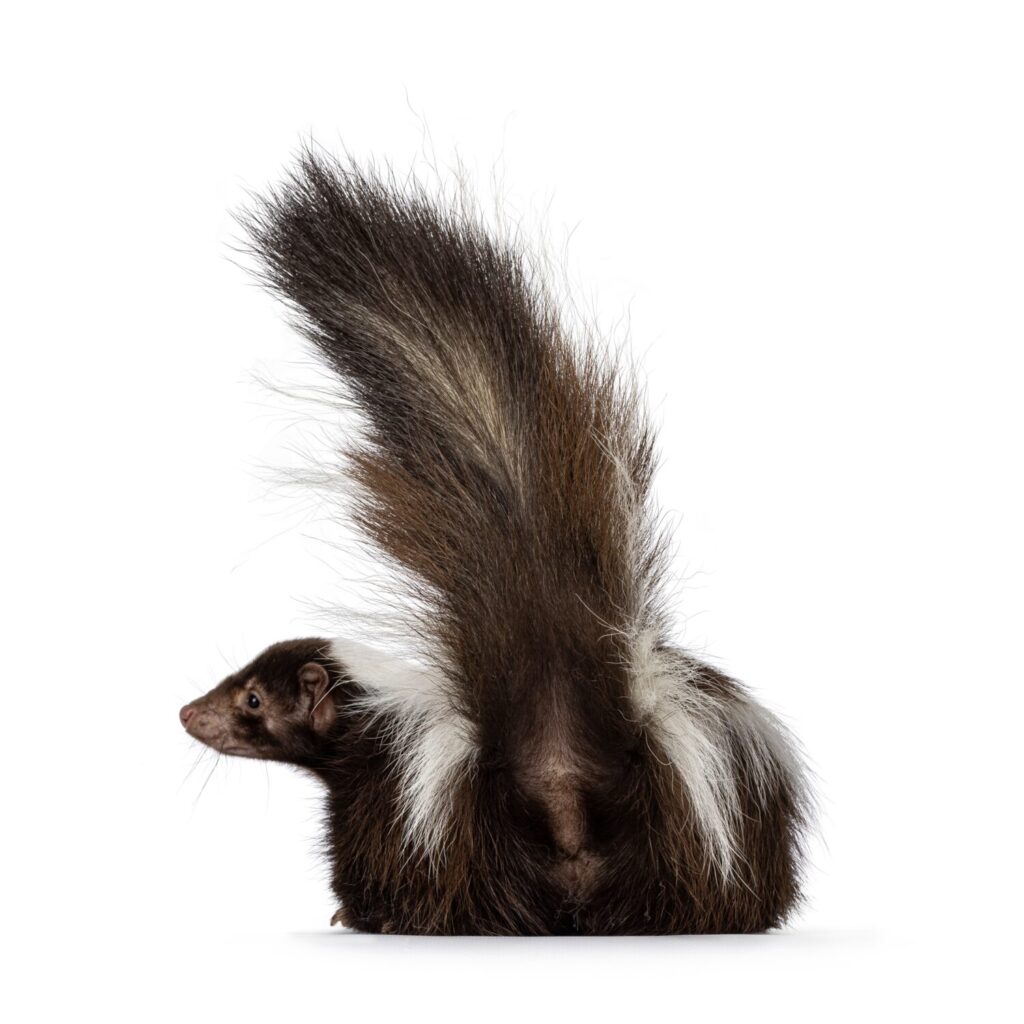
While skunks will spray to deter predators or other threats, they will not spray other skunks.
©Nynke van Holten/Shutterstock.com
While all carnivores have anal glands that secrete scents, skunks are the only ones that use their scent as a defense mechanism. Since they are not particularly fast or strong, spraying is a skunk’s only true defense against predators or threats. The anal glands are located in the rectum, under the base of the tail. A skunk’s anal glands protrude out of the anus. Each gland has a nipple from which an oily substance can be released. By tightening their sphincter muscles, skunks can direct the flow and direction of this release. Skunks can spray up to 15 feet and can accurately direct it within just a few feet of their target.
Skunks use their spray as a last resort when it comes to defense. A skunk can only produce around 4 tablespoons of scent at a time. When they spray, they deplete this reserve, and it can take up to a week to replenish. This leaves the skunk defenseless for up to 7 days. As such, a skunk will only spray if it feels like it has no other option to evade a threat. Before a skunk sprays, though, it will give several warnings. If a striped skunk feels threatened, it will face the threat, raise its tail, and stomp its front feet. If this doesn’t scare the threat away, the skunk will turn around with its tail raised. It is only after these warnings that the skunk will spray.
When Spraying Doesn’t Work
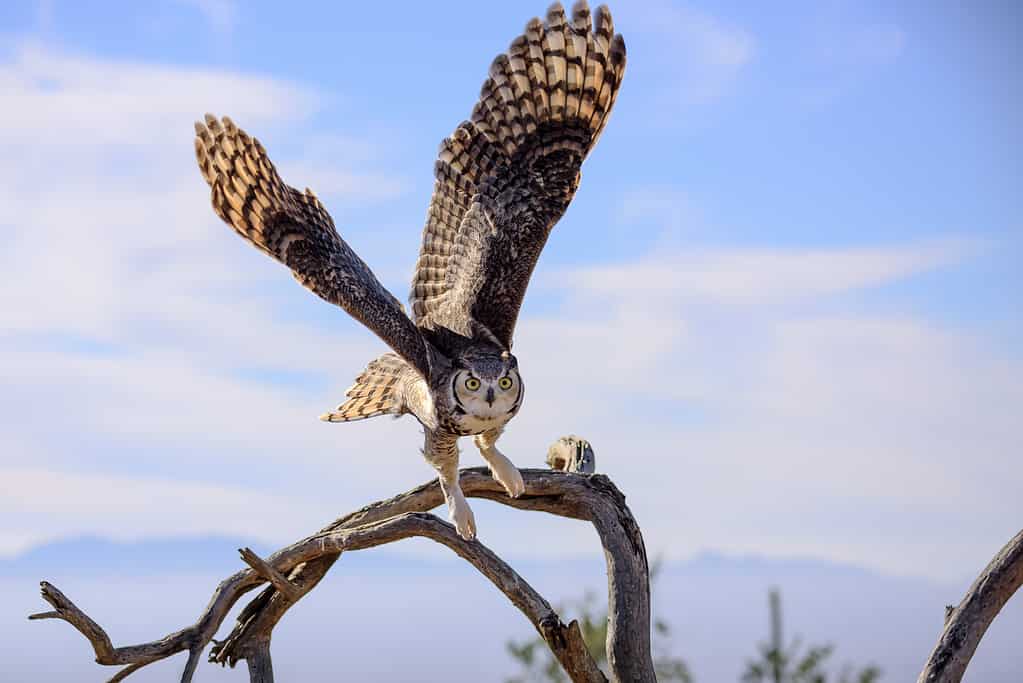
The great horned owl has the largest wingspan of any North American owl.
©iStock.com/kojihirano
The biggest wild threat to skunks is the great horned owl. While bears, bobcats, and coyotes will occasionally eat skunks, the great horned owl is one of the only species that regularly eats them. While mammals will generally avoid the skunk due to its spray, the owl’s sense of smell is not defined enough to register how bad skunk spray smells, so this defense mechanism is useless against them. This leaves skunks vulnerable to the strong talons of the big owls, putting the skunk’s life at risk.
The photo featured at the top of this post is © bobloblaw/iStock via Getty Images
Thank you for reading! Have some feedback for us? Contact the AZ Animals editorial team.



